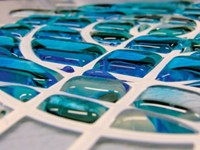Advertisement
Grab your lab coat. Let's get started
Welcome!
Welcome!
Create an account below to get 6 C&EN articles per month, receive newsletters and more - all free.
It seems this is your first time logging in online. Please enter the following information to continue.
As an ACS member you automatically get access to this site. All we need is few more details to create your reading experience.
Not you? Sign in with a different account.
Not you? Sign in with a different account.
ERROR 1
ERROR 1
ERROR 2
ERROR 2
ERROR 2
ERROR 2
ERROR 2
Password and Confirm password must match.
If you have an ACS member number, please enter it here so we can link this account to your membership. (optional)
ERROR 2
ACS values your privacy. By submitting your information, you are gaining access to C&EN and subscribing to our weekly newsletter. We use the information you provide to make your reading experience better, and we will never sell your data to third party members.
Coatings
Liquid film self-heals and sticks to metals
Network of graphene microcapsules stabilizes oil films, enabling coating to repair itself repeatedly
by Mitch Jacoby
February 10, 2019
| A version of this story appeared in
Volume 97, Issue 6

Scratching an oil film with a hard object exposes the underlying surface, but only briefly. The oil flows quickly and reestablishes a continuous film. The flow properties make oil films self-healing, which is desirable for protective coatings on metals, for example. But the same property prevents the film from remaining in place. Increasing the viscosity can pin the film to the metal surface, but it slows the healing process. With a nod to Shakespeare, Jiaxing Huang of Northwestern University sums up the dilemma this way: To flow or not to flow, that is question. His group just came up with a solution that enables oil films to do both—flow and not flow (Research 2019, DOI: 10.1155/2019/3517816). By using a spray-drying procedure, Huang, Alane Tarianna O. Lim, and coworkers formed a network of interconnected graphene microcapsules with 10 nm thick walls and 250 nm voids. Tests show that adding a small amount of the microcapsules (5 wt %) to silicone oil increases the oil’s viscosity by a factor of 1,000, causing films to remain on metal surfaces. Scratching the films ruptures the capsules, allowing oil to flow quickly but briefly as the network repairs itself and halts the flow. In contrast to some polymers that exhibit self-healing only on a microscopic scale, the water- and acid-resistant liquid film heals macroscopic damage, even after scratching the same spot 200 times.




Join the conversation
Contact the reporter
Submit a Letter to the Editor for publication
Engage with us on Twitter